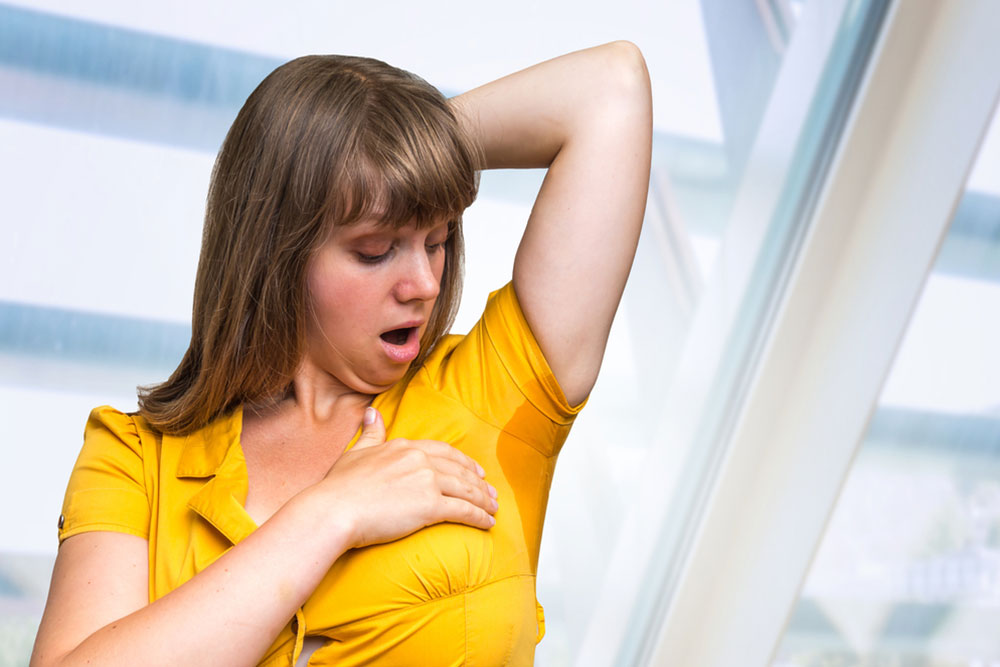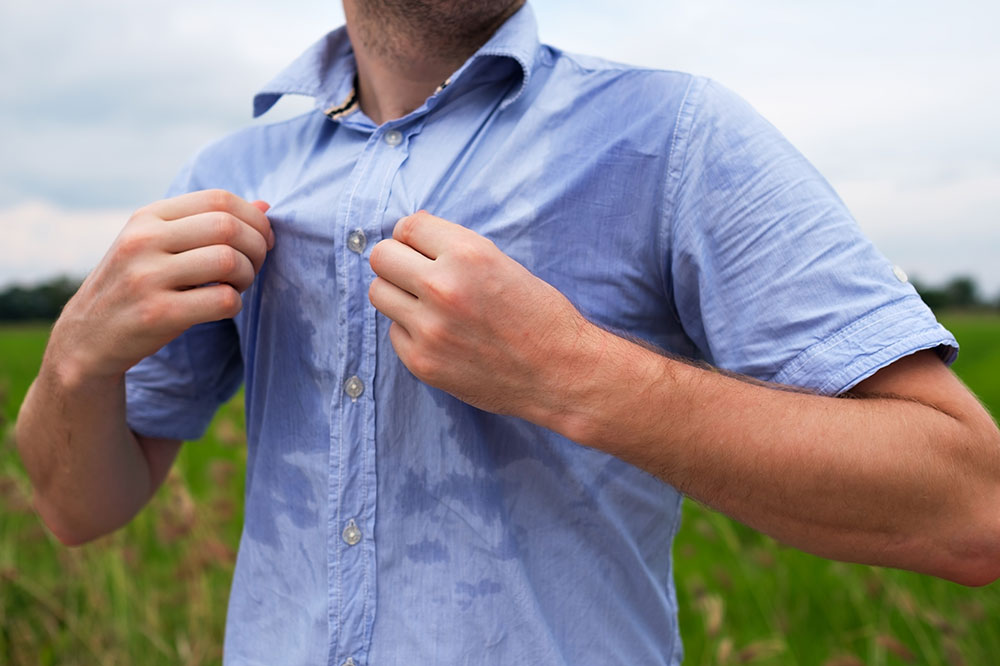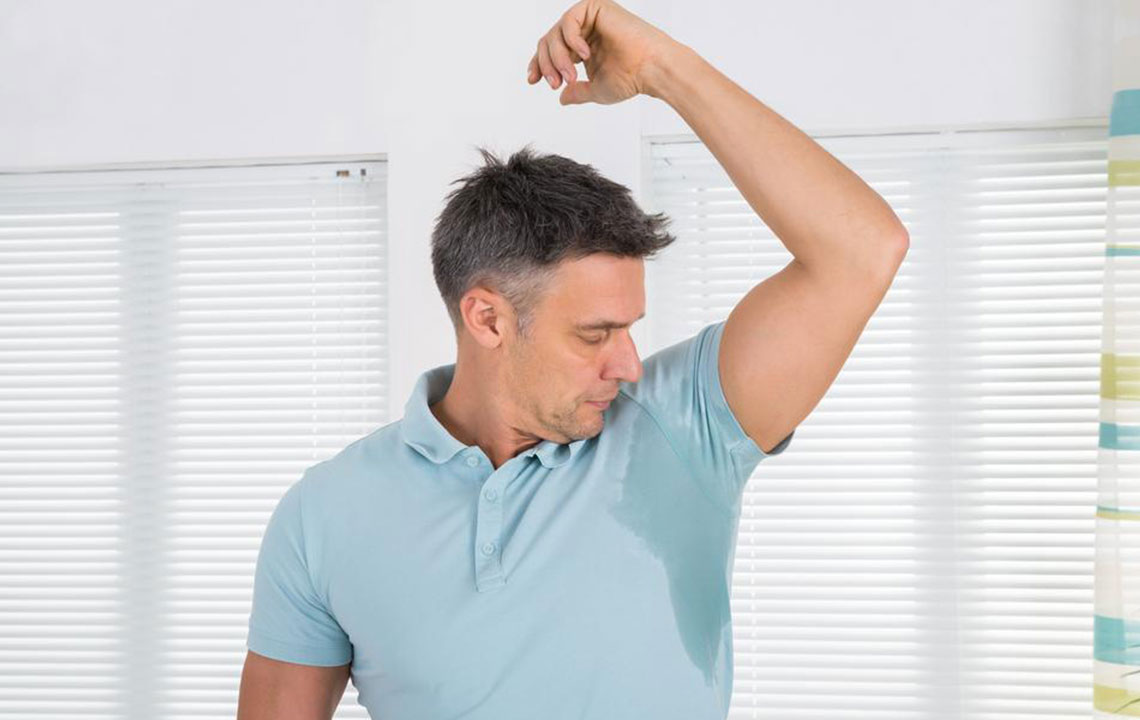Comprehensive Guide to Excessive Sweating: Causes, Symptoms, and Effective Treatments
This comprehensive guide explores the causes, symptoms, and treatment options for hyperhidrosis, a condition characterized by excessive sweating. Learn about the differences between primary and secondary hyperhidrosis, common triggers, and effective therapies such as topical treatments, medical procedures, and lifestyle changes. By understanding the underlying factors and available options, individuals can better manage symptoms and improve their quality of life. Consult healthcare professionals for personalized treatment plans to combat this condition effectively.

Excessive sweating, medically known as hyperhidrosis, is a condition that profoundly impacts the quality of life for millions worldwide. While sweating is a natural and essential physiological process that helps regulate body temperature and eliminate toxins, hyperhidrosis causes abnormal and persistent overproduction of sweat. It can occur even without physical activity or high temperatures, leading to embarrassment, discomfort, and social anxiety among those affected.
Understanding hyperhidrosis requires a detailed exploration of its types, causes, symptoms, and available treatment options. This comprehensive guide aims to shed light on what causes excessive sweating, how to identify its symptoms, and what effective treatments are available, including lifestyle adjustments, medical procedures, and addressing underlying health issues.
What Is Hyperhidrosis? An In-Depth Explanation
Hyperhidrosis is a medical condition characterized by the overactivity of sweat glands, resulting in excessive perspiration that surpasses the body’s thermoregulatory needs. This condition can affect various parts of the body, including the hands, feet, underarms, face, and groin area. The severity of hyperhidrosis varies from person to person, with some experiencing mild discomfort and others suffering from debilitating symptoms that interfere with daily life.
Physiologically, sweat glands are controlled by the sympathetic nervous system, which responds to signals indicating the need to cool the body or respond to stress. In hyperhidrosis, this regulation becomes dysregulated, causing glands to produce sweat uncontrollably. The condition is generally categorized into two types: primary hyperhidrosis and secondary hyperhidrosis.
Primary Hyperhidrosis
This form usually begins during childhood or adolescence and is localized, affecting specific areas such as the palms, soles, underarms, or face. The exact cause of primary hyperhidrosis remains unclear, but it is believed to involve overactivation of the sweat glands due to nerve signals. Genetic factors are often involved, with a family history present in many cases. Primary hyperhidrosis typically occurs in episodes, often triggered by emotional or psychological stimuli like stress, anxiety, or excitement.
Secondary Hyperhidrosis
Unlike its primary counterpart, secondary hyperhidrosis involves more widespread sweating across large parts of the body or even the entire body. It is generally caused by underlying health conditions, medications, or hormonal changes. This form of hyperhidrosis tends to develop later in life and may be associated with conditions such as menopause, diabetes, infections, metabolic disorders, certain cancers, or side effects of medication.
Common Causes and Triggers of Excessive Sweating
The causes of hyperhidrosis can be diverse, ranging from genetic predispositions to external factors. Identifying the triggers is essential for effective management and treatment. Below are some of the primary factors that contribute to excessive sweating:
Hormonal Imbalances: Fluctuations in hormones, particularly during puberty, pregnancy, menopause, or due to thyroid issues, can stimulate sweat glands excessively.
Medications: Certain drugs, including antidepressants, antipsychotics, and medications for diabetes, can cause hyperhidrosis as a side effect.
Stress and Anxiety: Emotional stress is a significant trigger, activating the sympathetic nervous system and spurring sweat production.
Infections and Illnesses: Conditions such as tuberculosis, HIV, or other systemic infections can cause secondary hyperhidrosis.
Medical Conditions: Diabetes, hyperthyroidism, and certain cancers are linked to increased sweating.
Pregnancy and Menopause: Hormonal shifts during pregnancy and menopause often lead to bouts of excessive sweating.
Substance Use: Smoking, alcohol consumption, and drug withdrawals are associated with increased perspiration.
Other Factors: Obesity and metabolic syndrome can also contribute to the severity of hyperhidrosis.
Recognizing the Symptoms of Hyperhidrosis
Symptoms of excessive sweating can vary widely but typically include persistent, uncontrollable perspiration that often occurs in specific body regions. Recognizing these symptoms early is vital for seeking appropriate treatment. Common signs include:
Very wet hands and feet, often dripping with sweat
Excessive underarm sweating that soaks through clothing
Frequent sweating of the face, neck, or back
Persistent dampness on other body parts without apparent cause
Skin irritation, chafing, or infections caused by constant moisture
Emotional distress or social withdrawal due to embarrassment
Effective Treatments for Excessive Sweating
Managing hyperhidrosis involves multiple strategies, ranging from lifestyle modifications and topical treatments to advanced medical procedures. The choice of treatment depends on the severity, location, and underlying causes of the condition. Here are some of the most effective treatment options:
1. Lifestyle Changes and Self-Care
For mild cases, simple measures can significantly reduce discomfort. These include wearing breathable clothing, using antiperspirants with high aluminum chloride content, and practicing good skin hygiene. Stress management techniques such as meditation, yoga, and counseling can also help reduce episodes triggered by emotional factors.
2. Topical Treatments
Prescription-strength antiperspirants containing aluminum chloride are often the first line of defense. They work by blocking sweat ducts temporarily. Applying these products at night and allowing adequate drying time can enhance their effectiveness.
3. Oral Medications
Anticholinergic drugs may be prescribed for severe hyperhidrosis, as they help reduce sweat production. However, these medications often come with side effects, including dry mouth, blurred vision, and urinary retention, so their use should be closely monitored by a healthcare professional.
4. Medical Procedures
Advanced treatments include:
Iontophoresis: A procedure where a device delivers a mild electrical current to affected areas like hands and feet, effectively reducing sweating.
Botulinum Toxin Injections: Botox treatments temporarily block nerve signals to sweat glands, providing relief that lasts for several months.
Endoscopic Thoracic Sympathectomy (ETS): A surgical option that interrupts nerve pathways responsible for excessive sweating, suitable for severe cases resistant to other therapies.
5. Addressing Underlying Conditions
If hyperhidrosis is secondary to an underlying health issue, treating the primary condition often alleviates the excessive sweating. For example, managing thyroid problems or hormonal imbalances can significantly improve symptoms.
When to See a Healthcare Professional
If excessive sweating interferes with daily activities, causes emotional distress, or leads to skin infections, consulting a healthcare provider is essential. Proper diagnosis and tailored treatments can dramatically improve quality of life. A healthcare professional may conduct physical examinations, sweat tests, and blood work to identify underlying causes and recommend appropriate therapies.
Conclusion: Living Better Despite Hyperhidrosis
While hyperhidrosis can be a challenging condition, many effective treatments are available to help manage symptoms and improve daily comfort. Understanding the causes and triggers is the first step toward finding a suitable treatment plan. With proper medical support, individuals suffering from excessive sweating can regain confidence and enjoy an active, comfortable life.





